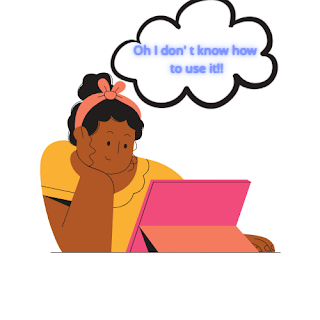DIGITAL DIVIDE
MEANING
It is an economic and social inequality with regard to access to use of or impact of Information and Communication Technologies. It is the gap between those who have ready access to computers and the internet and those who do not.
DEFINITION
Digital divide refers to the gap between individuals, households, businesses and geographic areas at different social economic levels with regard to access Information and Communication Technologies and to their use of the internet for a wide variety of activities.
CAUSES OF DIGITAL DIVIDE
- Lack of motivation to learn how to use Technology
- Low literacy levels.
- Low income levels.
- Lack of physical access to technology and digital literacy.
- Geographical restrictions.
TYPES OF DIGITAL DIVIDER
- Digital natives.
- Digital immigrants
These two terms are coined and popularized by Education Consultant Prensky in 2001.
DIGITAL NATIVES
Children in a digital media saturated world require a media rich learning environment to hold their attention . These children are called digital natives.
Example : The current generation of college students.
They always have the internet ,laptops ,cell phones etc. which allows them to instantly capture or communicate with the entire world.
They adapt the changes in the environment quickly and incorporate the latest technology into their life to become faster.
DIGITAL IMMIGRANTS
Digital immigrants means anyone who grew up prior to the digital age. Generally people considered to be digital immigrants if they were born prior to 1985. They were introduced to technology later in life and adopted it use, as opposed to digital natives who are said to have been raised alongside developing technologies.
They prefer to proper English when texting and used formal communication channels such as phones, detailed email or face to face communication.
HOW DO WE BRIDGE THE GAP BETWEEN NATIVES & IMMIGRANTS
- Immigrants should step out from their comfort zone and meet our students (natives) where they are.
- Realize that natives are far ahead from immigrants in the application of technologies.
- Immigrants should change their accent and move on.
- Listen the natives ie, how technology help them to conduct their lives, work with them and value their knowledge.
- Give more importance on how we communicate over what we communicate.
- Immigrants think in a straight line for sending one topic at a time but the native are multitaskers. So to hold their interest immigrants also be multitaskers
- Natives students have new set of needs and require entirely new approach of advices so immigrants should work with them so they can learn their language and help them make sound decisions
- Immigrants view of education is that it is a process which forces as much information to students mind as possible at a moment, to natives education is anything that prepare them for their future. So immigrants should be willing to teach natives how to find important information and put less emphasis on forcing students to learn exact information.





0 Comments